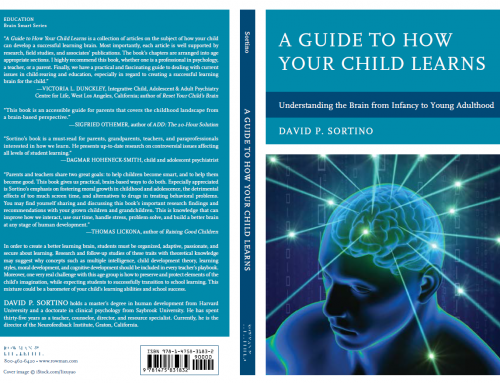Teachers need support in teaching students with reactive attachment disorder, or RAD. We hear a great deal about ADHD children and failed school performance, but very little is said about RAD students. RAD students exhibit serious social and emotional issues, which makes them view every new learning situation, every new relationship with mistrust and fear. The angry or seriously withdrawn student who disrespects you at every step is in reality a very frightened child trying to survive. In short, RAD students have serious abandonment issues caused by a separation from their caregivers that are often compared to a paper cut to the heart that never heals. Like a bottomless pail that flows out, teachers can never stop trying to reach this child due to the RAD students’ mistrustful personalities.
For example, a major area of the brain located in the limbic system is the thalamus, which interprets danger and threats to our survival. When the brain interprets the world with extreme mistrust the thalamus sends a signal to another part of the limbic system called the amygdala and a fight-or-flight response ensues. Adoptive or abused children are prime candidates for attachment disorders and almost always link even the most unthreatening experience to their survival. The umbilical cord that connects them with their caregivers has been severed. To make matters worse the chemical cortisol gives their brain a jolt to fight or flight, which only exacerbates the interpretation.
School and its learning environment is such a threat to RAD students because education can be a predominantly left-brain exercise or linear, sequential, mathematical processing. For many RAD students, the Catch-22 is that the right side of their brain, (non-linear side) becomes dominant. These are students who will excel in art, but anything verbal, logical or mathematical becomes a test of survival. Conversely, securely attached students do not have this problem. Securely attached students signal to the thalamus that they trust school, learning and teachers. The hippocampus, the seat of emotional relationships, also located in the limbic system, bonds with learning and moves those processes to the higher centers of the brain for an optimal learning experience. RAD students’ brains mistrust this left-brain learning experience unless it is something kinesthetic, visual and/or associated with the arts. Again, it is for this reason that RAD students are often gifted artistically or kinesthetically.
Since many RAD students suffer academically, teachers will be more successful with RAD students if they combine lessons that are visual or kinesthetic with remediation. Explained in my book, The Promised Cookie – Angry Children no Longer, I successfully employed a curriculum that was artistic and kinesthetic to reach my RAD students. For example, to teach writing, I had RAD students first illustrate the writing experience which then became a book. Writing their own books were used to reinforce fluency by having them attach words to the their illustrations. In addition, they used their books to read to younger children, further reinforcing the learning or bonding experience. Choral reading was also effective because it allowed the students to read along with me, reinforcing the bonding process. Moreover, I always had the students begin every reading exercise by first interpreting illustrations. Math remediation was also supported artistically. Students drew the school’s building and grounds and then incorporated the measurements into the diagrams of the buildings. We created balsa wood models of the school’s building and grounds for further bonding. Finally, I incorporated Sullivan Associates, which is an individualized math program that allowed the students to graph their progress. The graphs served as another visual reinforcement when they were displayed on the classroom walls. Furthermore, the math program provided our students with an immediate reinforcement because the answers were located on the side of each page. After they completed the examples they could turn to the answers for immediate reinforcement and empowerment.
When teaching RAD students, remember that their true genius and safety is the visual or right side of their brains. If you want to connect with the left side you must first put the fire out on the right side.
David Sortino Ph.D.,a Graton resident is the director of The Neurofeedback Institute. E-mail him at davidsortino@comcast.net.


